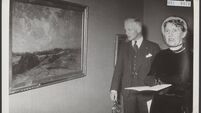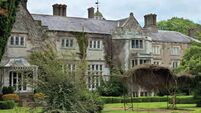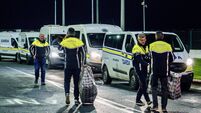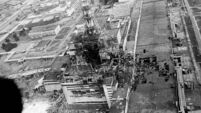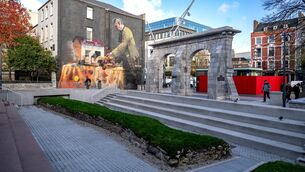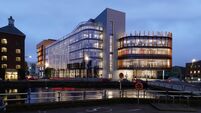Letters to the Editor: Nazi bombs in Dublin were no accident
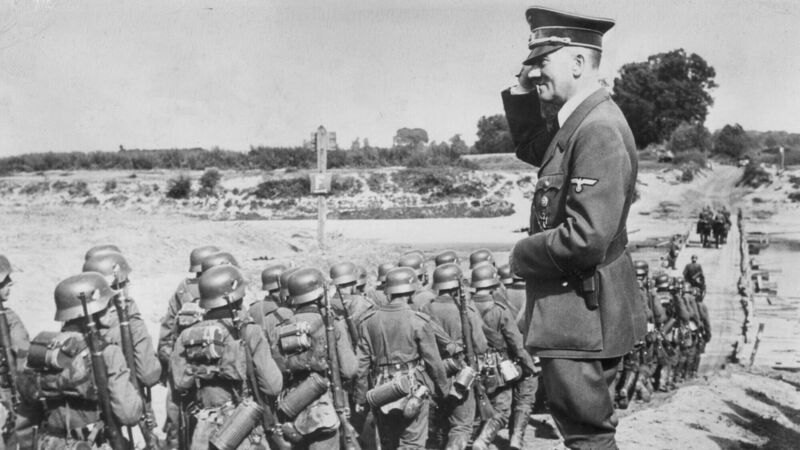
Adolf Hitler oversees his military troop during the Nazi occupation of Poland. File picture: Hulton/Getty
On May 31, 1941 between 1.55am and 2.10am, German bombs fell on Dublin, centred in the North Strand area of the city which resulted in many casualties and damage to property.
Since then, historians have offered various reasons as to why the bombing occurred.
Likely causes from bending of radio beams by British intelligence to accidental or no accident have been proffered.
To date, no evidence has been adduced to corroborate either theory.
However, extracts from surviving Luftwaffe aerial photographs taken in 1940 show that Nazi Germany had acquired detailed knowledge of Dublin, city and county, and pinpointed with great accuracy the exact locations of military and commercial locations within the Dublin area.
HISTORY HUB
If you are interested in this article then no doubt you will enjoy exploring the various history collections and content in our history hub. Check it out HERE and happy reading
Of particular interest is the detail in photographs showing the Dublin port area and the Liffey dockyard.
In December 1940, when several of these pictures were taken, my father, Desmond Mulvany, originally from Whitehall in Dublin, was employed in the dockyard as an electrician degaussing British and Allied vessels.
He had previously worked as an electrician in the naval section of the Cammell Laird Shipyard in Birkenhead.
Following a request by the Irish government for British assistance, he was brought to Dublin on secondment with a royal navy intelligence officer, to advise the liffey dockyard staff on the methodology of routing an electric charge through cables that had to be encircled around the hull of ships to demagnetise vessels in order to prevent activation of magnetic mines.
During the Second World War, all sorts of mines were developed and used, sometimes complete minefields were created.
A particularly deadly variety was the magnetic mine, which was engineered by German naval research into torpedo and mine fuses, and they successfully developed a magnetic proximity fuse.
The magnetic mine was based on the principle that when the residual magnetism of a ship distorted the local geomagnetic field of the sensor, it activated the mine’s magnetic needle of the trigger.
One of the countermeasures was the installation of wiping stations which degaussed or demagnetised the ship’s natural magnetic field.
There is also anecdotal family evidence which suggests the German ambassador to Ireland, Eduard Hempel, had become aware of what was going on in the Liffey dockyard and had been seen there warning staff of the consequences of breaching Irish neutrality.
These aerial photographs prove beyond doubt that Hitler was targeting Irish military locations to explore vulnerabilities.
A view has been expressed that there is no extant evidence which indicates that a German invasion was being planned or imminent, and that these images are only surveillance photographs which could be expected from belligerents engaged in military operations against each other.
That opinion is naive in many respects.
Surveillance images which show the precise locations of military installations and commercial targets have only one purpose in a time of war, and that is to seek out and identify the weaknesses and strengths of a predetermined target to overcome defences.
The multiple targeting of various Irish military installations and commercial locations within Dublin, city and county, by the Nazis had military objectives and it was not only just for surveillance.
Indeed, the amount of detail and precise knowledge that had been accumulated on each location within the Dublin area is very revealing and would suggest the Nazis had already acquired eyes on the ground intelligence from their agents or collaborators operating in Ireland.
It is also instructive to note that by the end of December 1940, Irish flagged neutral vessels had already been attacked and sunk by German aircraft and U-Boats, with the loss of merchant seamen from Ireland, Britain, Norway and Argentina.
The North Strand bombing of May 31, 1941, was a plausible deniable luftwaffe military incursion into Irish sovereign territory, and but for the sacrifice of British and allied forces, which includes many Irishmen and Irishwomen, Nazi jackboots would have been marching on Dublin streets.
It has been suggested that the bombing of the North Strand in 1941 was accidental, however it is more likely the German pilots missed their intended target, “The Dublin Docks”.
Nick Foley is to be applauded for his letter ( May 22) showing his reasoned defence of Christ’s divinity.
To prove that Christ was divine, one has only to consider the fact that of his 12 disciples, 11 died violent deaths in countries far from their homeland.
Peter died in Rome, crucified differently from Christ because he did not wish to die in the same manner of his master.
Paul, though strictly not a disciple, also died a violent death in Rome.
Men such as those do not face hazardous journeys and violent deaths for a mere human being.
They walked and talked with Jesus Christ long enough to recognise he was no ordinary human being.
Remember the occasion when Jesus was talking to them about the Father and of them spoke up and said “show us the Father”.
Jesus replied: “He who sees me sees the Father.
And of course there are the countless Jesus performed in his three years of public life, some of which 19th century German rationalists attempted to disprove with the most ludicrous explanations, such as the wine at the wedding feast had taken on the taste of wine from the casks.
But this contradicted the steward saying: “Good wine is usually served first, but you have kept the best wine until the last.”
It is impossible, therefore, for water to become “the best wine” from the wood of a cask.
I’m afraid that not being in possession of all the facts in relation to whether or not the GAA and or RTÉ have conspired to compress the season so that there is an actual need for a GAAGo streaming service to PPV services, I have no choice but to remain open minded on the matter.
However, I am curious as to the selection of games for pay-per-view.
I question whether games with less demand are shown on TV while games with far more demand for viewership are reserved for PPV.
For example the Cork vs Limerick sold-out game which proves the demand for that event.
The obvious answer might be financial gain rather than a need to satisfy an undocumented amount of interested diaspora.
I’m curious too about the cameras and staff used by GAAGo for their coverage of PPV games.
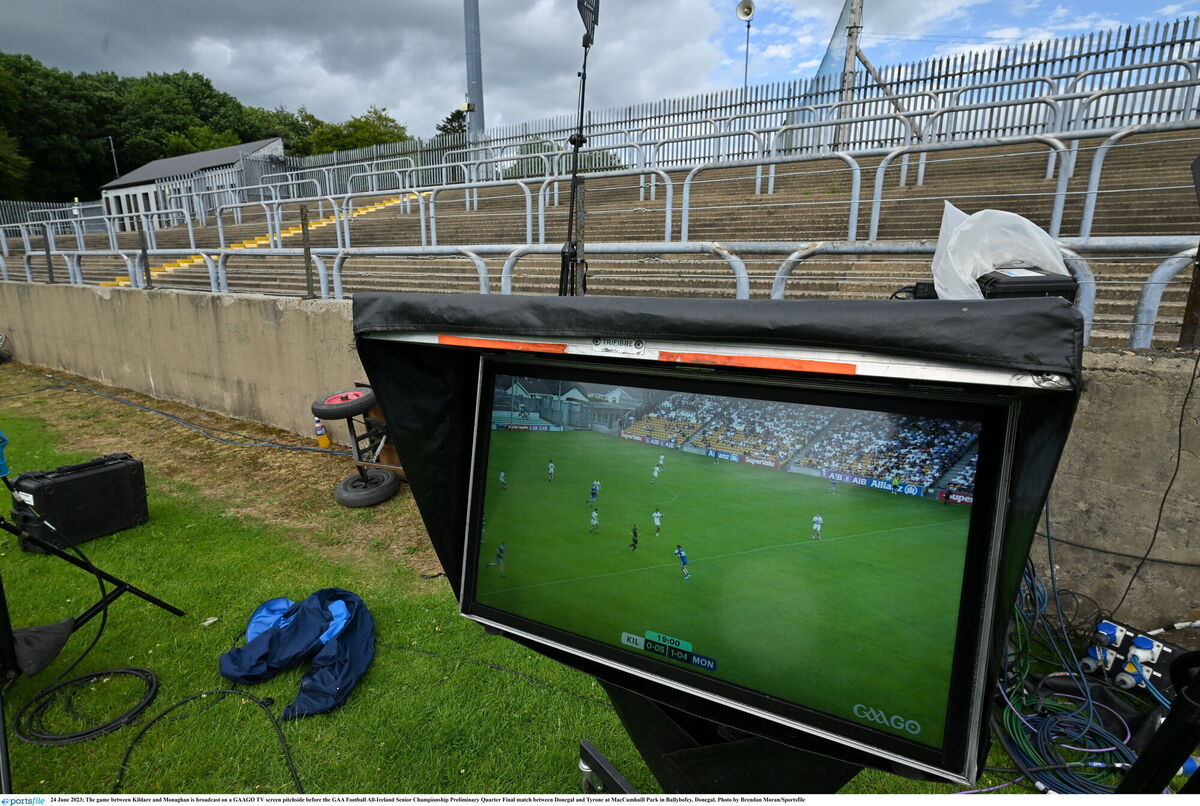
Could these be the same staff and equipment that RTÉ say they don’t have enough of to go around?
Curious too about where any (if any) profits go from these PPV games, and whether there is an ethical question regarding a private company using a hybrid name of two national organisations making profit from amateur players, playing games which are part of our culture and heritage.
I did pay my €12 to watch this outstanding game and it was worth every cent (in the absence of my already licence-funded TV) and as a Limerick hurling fan, may I wholeheartedly congratulate Cork for their well deserved win, and hope it signals a return to the great days of Cork hurling.
We’ve missed you. We’ve missed these great hurling days between great sporting rivals with well packed houses.
In conclusion, I will reserve judgment on the GAAGo issue until I am in possession of more facts than I currently have, so I do not subscribe to any unproven conspiracy theory.
‘Survivors of Church of Ireland home dismayed by Synod baptism vote’ ( , Letters, May 17) eloquently made fine points which all Church of Ireland members should discuss and consider.
To decline to baptise children appears to fly in the face of Our Lord’s teaching: “Let the little children come to me, and do not hinder them, for the kingdom of heaven belongs to such as these.”
Fundamentalist values are replacing the Church of Ireland’s tradition of ‘open evangelicalism’. Intolerance, bullying, harassment, and cover up of abuse are likely to be the inevitable consequences.
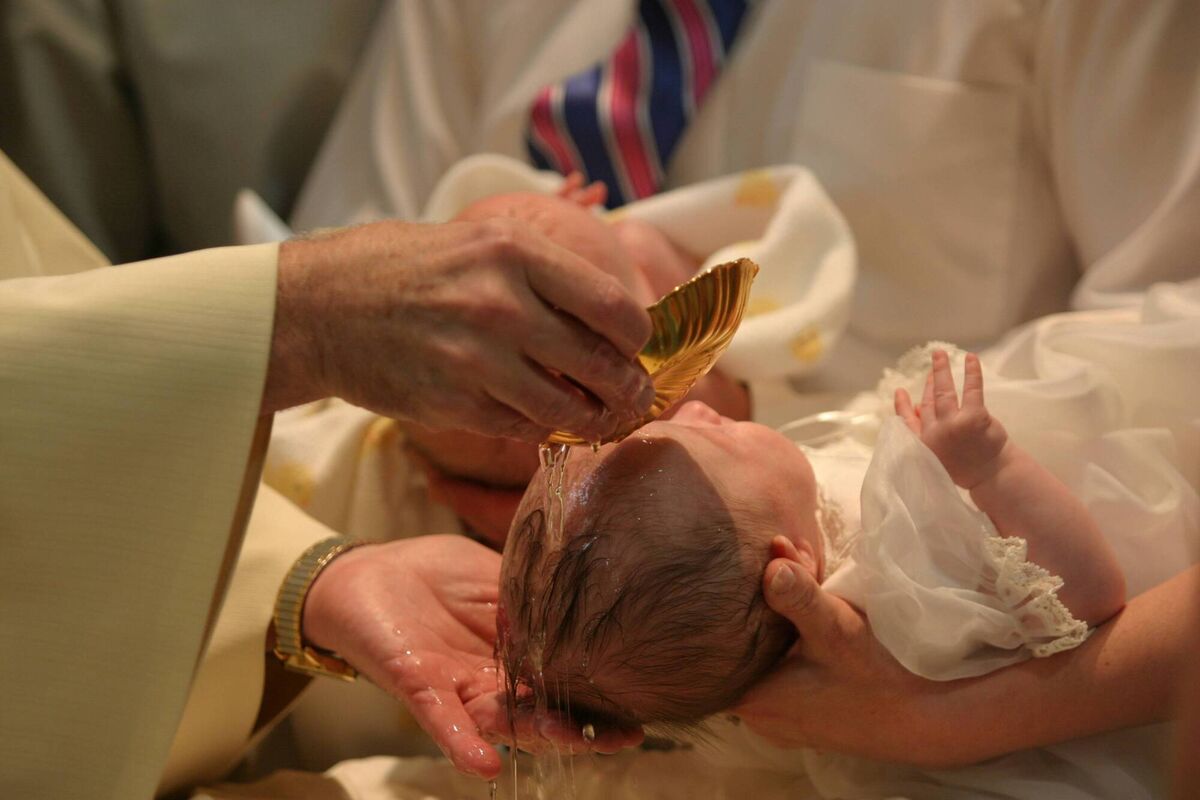
I was commissioned as an evangelist in 2017 shortly after retirement from a career in medicine.
But I have become thoroughly disheartened by the scale of Irish Protestant Church abuse being uncovered.
Has clay-footed leadership incompetence seen know-all authoritarian bullies trash the lives of countless Church of Ireland members?
The safeguarding of each Church member needs to be overseen by professionally qualified people, independent of our dioceses or Bishops.

